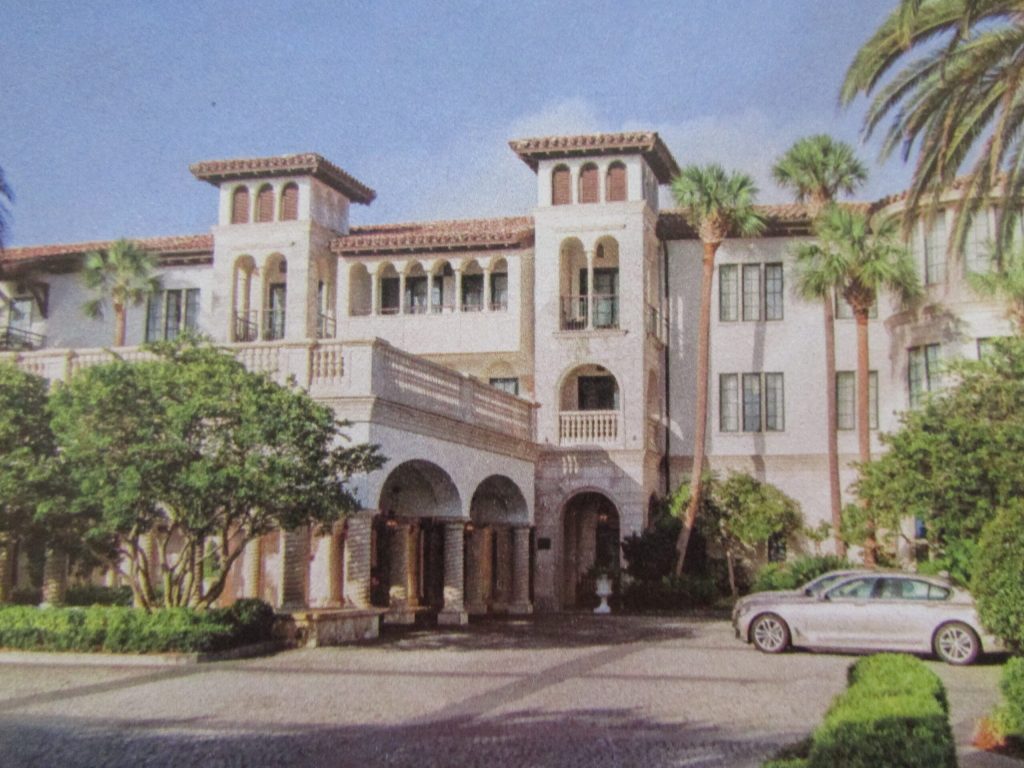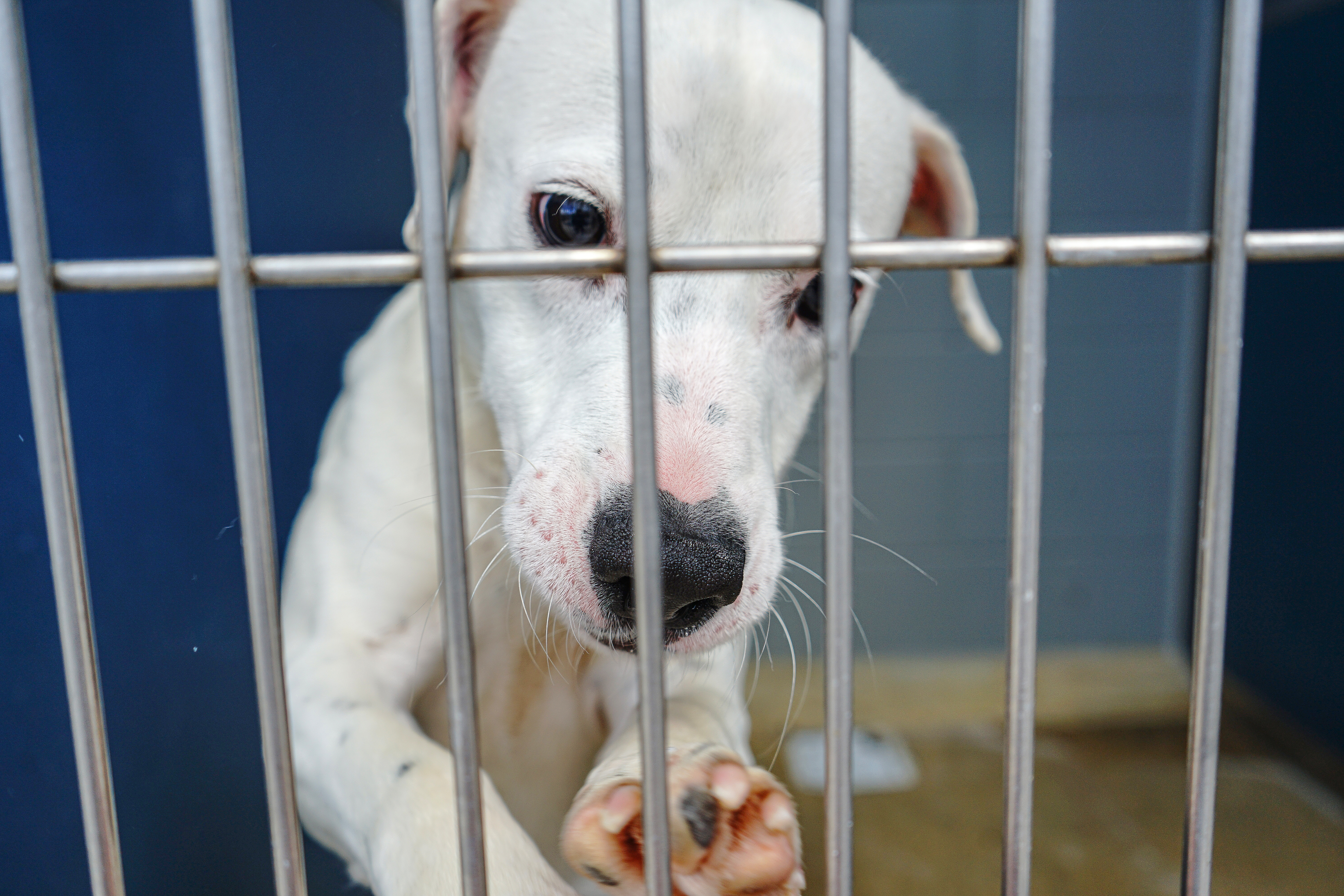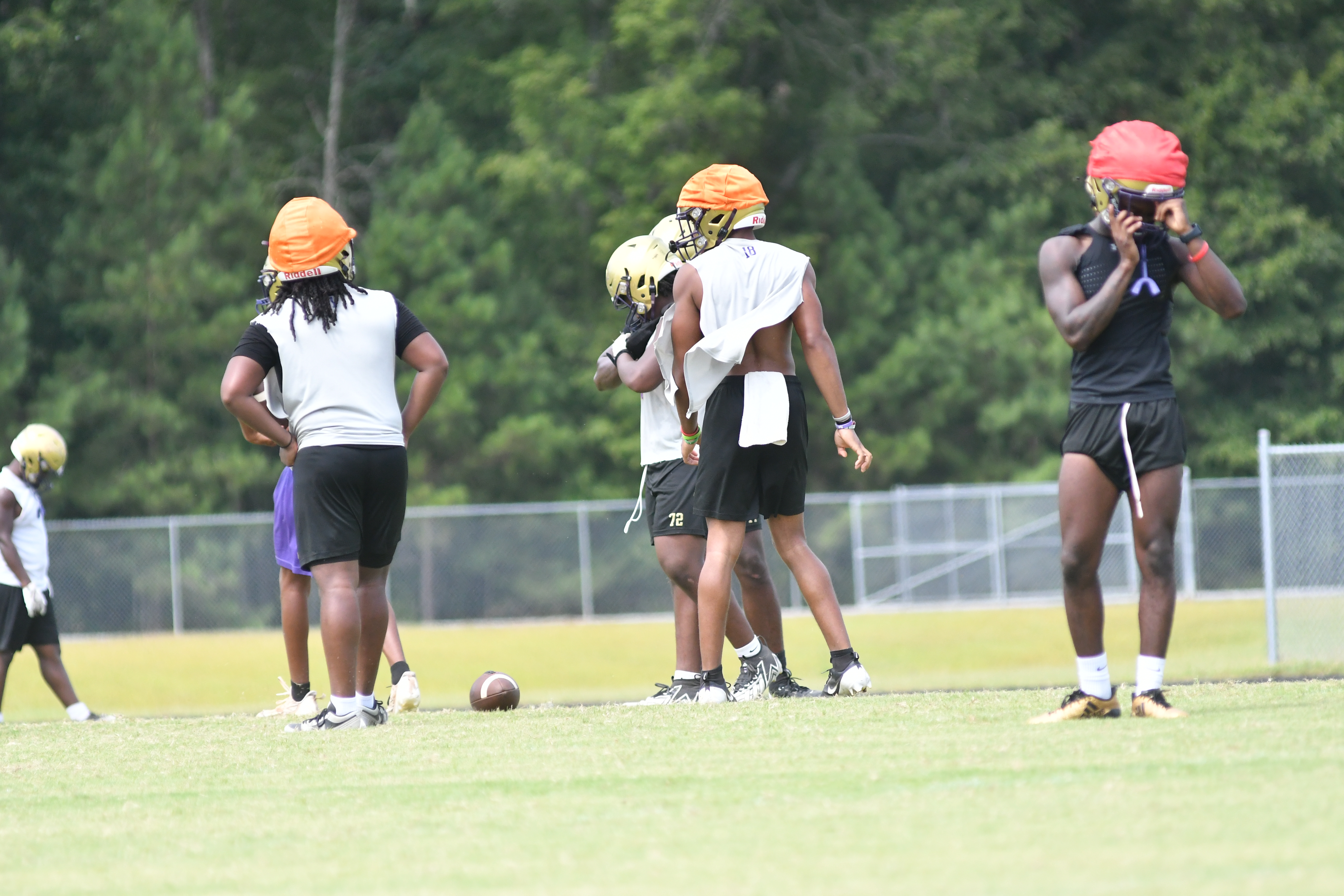Barrier Islands, Wild and Tangled
Published 1:00 pm Sunday, September 29, 2024

- The Cloister was built by Howard Coffin in 1928. Many Presidents, including Jimmy Carter, have stayed here and have planted a commemorative tree.
|
Getting your Trinity Audio player ready...
|
Today we are going to talk about some of the smaller, barrier islands that make up the Golden Isles of Georgia. When you look at the map of these little known islands, they are either by the mouth of the Savannah River or the Altamaha River. Some also were carved out by the Intracoastal Waterway and some are by Brunswick, where the coastline was planned out by the Atlantic Ocean. Most of them, especially the tiniest ones, are wildlife refuges and are protected from humans. We also have some that “come and go” depending on the tide and the current of the Intracoastal Waterway.
I think that making a list of all of the islands that we are going to talk about will help us keep tract of our journey. I have them in order from north on down. First: Tybee Island*, Little Tybee Island*, Skidaway Island*, Wassaw Island*, Ossabaw Island* St. Catherines Island* Blackbeard Island*, Sapelo Island* Wolf Island*, Little St. Simons*, Sea Island*, St. Simons Island*, Jekyll Island*, and Cumberland Island*. As you can see, we will eventually do them all!
I know, it’s like looking into a box of donuts, they’re so yummy that it is hard to decide. So, let’s start with one up the northern coast and go on down. That one will be Wassaw Island.
Trending
#1 Wassaw Island
Not only is Wassaw Island the second barrier island south of Tybee, it is also a National Wildlife Refuge made up of over 10,000 acres, which includes salt marshes, dunes and coastal forests. Wassaw is the larger of the three islands that protects the main land from the Atlantic Ocean. It is also bordered by Ossabaw Sound to the south and Wassaw Sound to the north.
Wassaw is actually made up of three islands which are separated by tidewater creeks, that turn and cut off access from Skidaway Island, which sets just to the west. Skidaway is largely made up of salt marshes and interconnecting creeks that go alongside the ocean and is covered with hundreds of oak and palm trees.
Gaining access to Wassaw Island, is a day trip from Tybee Island, or Savannah. Since there are no road accesses, it can only be reached by kayak or boat.
There are some permanent, historical structures on Wassaw. One is Battery Morgan, a concrete and tabby fort that was built into the dunes that once stood at its northern end. This was built around the time of the Spanish American War. Together, with Fort Screven on Tybee Island, Battery Morgan formed part of the United States coastal defense. Several small buildings erected in the upland region were put there by the original owners of the land. This area is now closed to visitors.
The public part of this National Wildlife Refuge is open year-round with the exception of two seasonal days in the fall, when private deer hunts are conducted. At these times, the whole island is closed to the public.
Trending
Open for day use only, are the biking trails, picnic area and swimming in the salt water. The fresh water ponds on the island are dangerous and swimming and fishing is not permitted in any of these, as they are the home to alligators and feral hogs. Camping is also forbidden. For an overnight stay, visitors often use the park land at adjacent Little Tybee Island instead.
On the western side, there is seven miles of deserted beaches, that are bordered by a large expanse of maritime forests of old oak trees. This area is the only part of the Refuge that is open to the public for hiking. It is covered by a series of trails, including one that takes you to an ancient ridge that forms a barrier between the ocean and the salt marshes of the islands interior.
Only a portion of the beach on the ocean side, is open to public. Most of this beach is part of the Wildlife Refuge and is off limits at all times. This area is the home of the endangered loggerhead turtles. Here, several dozen of these ancient reptiles, come on shore each year to bury their eggs. A conservation program is strictly enforced in this area to ensure that breeding is successful.
For those who like to kayak, full day, guided tours are available to those who are experienced. You also have to have the physical endurance to paddle the long trip. You can bring or rent a kayak or go on a trip by yourself. However, it is a long distance from marina to marina. Also, do not attempt it by yourself if you are not experienced.
#2 Wolf Island
Wolf Island appears to be just about forgotten by humans but not by the precious wildlife that calls it home. Situated between Doboy Sound and the sea port of Darien, the only documented human habitation on Wolf Island was found in an antique photo of a lighthouse, that is no longer there. It was likely destroyed in the early 1860s, before the War Between the States, because it is known that this lighthouse was blown up by Confederate forces, that were trying to protect the port of Darien from the Union ships and their blockade. This weathered structure was completed in 1822, not long after the nearby Sapelo Island light station was placed into service. We can only speculate, but not knowing for sure, that the bearded man in black hat is keeper, William Rittenberry, and that perhaps, the children are his family.
#3 Little St. Simons Island
Little St. Simons Island only measures approximately 5 miles by 3 miles. Nonetheless, it has over seven miles of beautiful beaches. Located north and east of St. Simons Island, it is also separated from Wolf Island by Altamaha Sound and from Sea Island by a maze of ocean fed marshes and creeks.
Even though it is very isolated, it is a barrier island and has remained virtually unchanged for hundreds, maybe thousands, of years. While the dunes on the other islands, that have had a lot of human contact, are not worn down on Little St. Simons. Therefore, the hills that are made from the old dunes are protected and are still like rolling ridges.
Despite its isolation and tiny size, as well as the fact that you can only get there by boat, once there, you will become captivated by one of the most gorgeous islands on the whole Atlantic Coast.
Like the other barrier islands, the first human residents on Little St. Simons Island, lived there approximately ten thousand years ago. Since then, various Native American tribes have lived, hunted and fished on the island. The Guale tribes that lived there in the 1500s, saw the Spanish come and explore for gold. Eventually, the Native Americans moved away or were killed by European diseases.
The first private owner of the island seems to have been Samuel Ougspourger, who lived in South Carolina. Ougspouger bought Little St. Simons in 1760, from King George II. Eight years later, he sold it to his grandson, Gabriel Manigault, of South Carolina, for the equivalent of around $17,000 in today’s money.
The Island’s next owner was Major Peirce Butler, who bought it in 1784, as well as the Hampton Plantation on St. Simons. Major Butler developed the island into an excellent place to grow cotton and rice. When the island would be flooded by the nearby Altamaha River, nutrients and fresh water soaked into the soil. This was just what the rice needed to thrive.
Major Butler hosted many famous guest’s, but perhaps the most famous was Aaron Burr, who came in 1804. You may recall that Aaron Burr was vice president of the United States. He also was the man who killed Alexander Hamilton, in a duel that same year. Burr had come south to escape the public and wait until he felt it would be safe to return back to Washington DC.
That same year, also saw a terrible hurricane hit Little St. Simons, nearly killing more than a hundred field workers. One of the overseers on the Island, a man named Morris, saw the signs of the approaching storm and put all his men into a sturdy structure called, The Hurricane House, just in time to save most of them from the fury of the storm. In gratitude for his quick thinking, the Butler family presented Morris with an engraved silver cup, that has been passed down from generation to generation.
One result of the 1804 hurricane was that dikes were built on Little St. Simons to protect the rice fields from further flooding. Visitors can still see remnants of those dikes.
Now, I’m going to ask you to get your imagination fired up and think about what I am about to tell you. The fate of Little St. Simons almost took a fatal blow in the early 1900s, when O. F. Chichester of the Eagle Pencil Company visited the Island and bought it. Chichester was going to harvest the trees on both Little St. Simons and Sea Island for his pencil making business. Then after taking all the trees he needed, he planned to sell the Islands. Without trees, the islands would probably have eroded away to nothing. Fortunately, the trees were too gnarled and Chichester realized that he could not use the wood for pencils. In 1908, he sold Little St. Simons to the Berolzheimer family. Talk about dodging a bullet!
The Berolzheimers built a bungalow on the southern end of the island and a hunting lodge in the middle, across from Cannon Point on St. Simons. The hunting lodge became quite popular when the family stocked the Island with deer which they and their guests would hunt. The bungalow burned down in the 1930s, in a fire perhaps set by poachers but the hunting lodge remained a popular place for the islands social life.
During World War II, soldiers and sailors patrolled the beaches watching for enemy submarines and landing parties. The Coast Guard vessels patrolled in the off shore waters. Later, workers deposited on the Island, large amounts of sediment, dredged from the Intracoastal Waterway.
Today, marshes make up most of the Island, where only about a quarter of it is high ground. Among additions made to the Island, in the 20th century, has been a dock and bulkhead, on Mosquito Creek, and forests of citrus trees along with many different kinds of animals. However, officials have removed some of the animals, like the cattle, because of the damage they do to the trees and dunes.
The island is still privately owned. There are six charming cottages that can accommodate up to 32 guests. Some of the cottages date back to the early 1900s. Rich guests, especially those from the political circles of New York City, have stayed on the island over the years.
For example, the former Georgia Governor and President of the United States, Jimmy Carter, visited here soon after his election to the Presidency in 1976. This was also the year, when the owners of the Island opened it to the public.
They could have sold Little St. Simons the way so many owners of coastal islands have done but instead they decided to use it for their own vacations and to make it available to a few others. Guests who make the trip out to the Island can enjoy horseback riding, fishing, swimming and taking canoe trips. There is also excellent birdwatching.
#4 Sea Island
Next, we will explore the history of Sea Island, which is about 5 miles long and 1 mile wide. It was almost completely ignored by humans until in the 1920s. However, we do know that a Guale tribe lived here briefly, probably during hunting seasons. However, when it came to building a permanent homesite, they seemed to have preferred to live on St. Simons Island. This was probably because Sea Island has more low, marshy areas than high up land. It is also in a place that is very susceptible to nor’easters. Therefore, the island remained pretty much isolated.
Today, there is a bridge that leads over the Black Banks River, from St. Simons Island to Sea Island. Because of this, the island was taken into an entirely different world, that of being a famous resort and an island with spectacular homes.
The man who started bringing civilization onto Sea Island was Howard Coffin. He was one of the first entrepreneurs to discover the beauty of the tall oaks that were draped in beautiful Spanish moss. Instantly, he fell in love with the charm of those majestic trees and in 1926, they helped him decide to buy Sea Island, even though it is just a sliver of land.
Coffin built a huge hotel, which he called, The Cloister, because of its being so far away from civilization. The first guests signed the hotel register at midnight on its opening day, October 12, 1928.
It still lures folks to come there today. The accommodations are world class and many folks stay in one of the 265 guest rooms. Here on the grounds of the resort is a champion style golf course, skeet shooting, and walking along the miles of unspoiled beaches.
The grounds of the resort is also known for one of the favorite traditions, strolling around beneath the commemorative oaks which have been planted by visiting United States Presidents, as well as world leaders. President Calvin Coolidge helped plant the first one during a holiday visit the year the resort opened and others have followed.
President George Bush choose the Sea Island Cloister Hotel as the site for the 2004 Summit Meeting of world leaders, which included former British Prime Minister Tony Blair. Blair and Bush each planted a commemorative oak tree while visiting.





